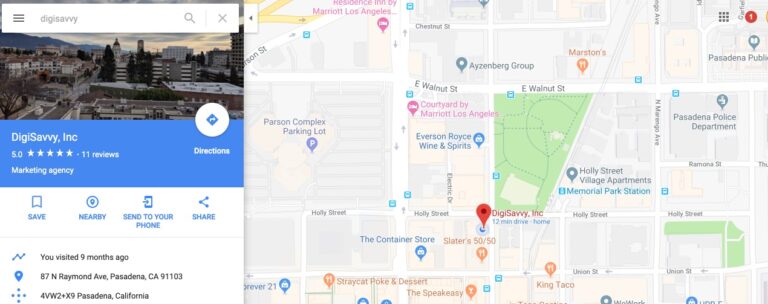Jumpstarting Your Own Content Style Guide

I spoke last time about the importance of a content style guide and whether or not you should use them for your own organization. The answer is YES! In our most recent design iteration, I had someone help us with our site’s copy and she made a number of suggestions for things to clean-up that were more mechanical in nature—not so much relating to the actual content per-se. It got me thinking: “Should we be standardizing how we present our content to the world?” That’s how I came up to content style guides and how they get used. I learned some stuff along the way. Let’s get to it!
For instance, let’s take the style guide from the Economist
- Never use a metaphor, simile or other figure of speech which you are used to seeing in print.
- Never use a long word where a short one will do.
- If it is possible to cut out a word, always cut it out.
- Never use the passive where you can use the active.
- Never use a foreign phrase, a scientific word or a jargon word if you can think of an everyday English equivalent.
- Break any of these rules sooner than say anything outright barbarous.
Start with style
Knowing a few structural things goes a long way. How do you handle the use of commas? Do you use the serial (Oxford) comma or not? What words do you capitalize? When do you hyphenate certain words and under what usage (noun, verb, adjective) etc.
I would start with an existing style guide and make it your own.
Voice and Tone
How should your company “sound” and be perceived? If your company is fun and funny, you can agree on some loose guidelines for what type humor you’ll allow for and what lines not to cross. If your company requires more professionalism, you can cut out the humor and keep to the point.
With DigiSavvy, I’m the only one writing here. But I do keep a simple guide for structural bits of our copy. I also am cognizant of the voice and tone I’ve established here. It should be fun and it should be informative and sometimes, although rarely, should be shocking. That’s the sort of voice I want to project to the world and to potential customers. We do good work, but we have fun, too and we are creative.
Think about your business’s voice and tone. If it were a person (don’t start with me on corporate personhood), how would you expect it to react in public, as a happy hour? Clear as mud? Good!
How you use images

This is an often overlooked area. How you use images on your website matters. Lots. Especially if you don’t want to get fined.
Things to consider for your images:
- Provide source to where you got the image from, (if not original content from your team) and link to it.
- Image sizing. What image sizes can be used for your content? Do you have a featured image that is square, or rectangular? You should define the image sizes for use in your content
- Alt Tag usage: What will you place in the image alt tag? Content title, or something more contextually accurate and true to the image itself.
- Do you float or center images—so that content either does or does not wrap around an image element.
Write for Humans, Not Machines

I’m referring to the topic of Search Engine Optimization (SEO). SEO is a practice of optimizing a website’s content so that it may be easily found by search engines and get indexed. SEO is an essential practice, but I don’t think it’s something that should heavy-handedly dictate your own content style guide.
There’s beauty in brevity
I’ll tell you this, I have a hard time with brevity. I often use ten words where five would do. Get to the point and move along. There’s no need to take people on a needless journey unless it’s central to the content produced. The Economist’s style guide harkens to that. Get to the point, use necessary language and don’t try to overdo it on lingo or big-words.
Stay on target
Your content should always be focused; that is, for each piece of content there should be one uniting topic or theme. Everything in that piece of content should directly tie to all the other bits. In my previous article on content style guides, I actually had this article as part of the other article. That piece was two thousand words plus! Upon closer inspection, I could see the content could be two different topics: The first topic of “Should you have a content style guide?” and the second topic “How do build your own content style guide.” Two similar bits of content that technically don’t need to be presented together.
So always focus your content.
Do know your keywords
I’ve said it before: The best way to market your keywords is to not market them. It bears repeating here: Do not create content based off of your brand’s keywords. This has very little to do with your style guide.
You should…
- Understand or at least know if organic search is relevant to your brand and/or the content you’re creating. Specifically, whom will benefit from the content you’re producing? End-users, customers?
- If you need to be concerned about search results then knowing what keywords are important to your organization is key. Content you create should have a consistent use if utilizing your brand or organization’s keywords.
You shouldn’t…
- Write content solely based on your keywords. Again, write for humans; write to create value, if you do that the rankings and organic will come.
- Talk about SEO and content style guides together. I say this because they are two very different disciplines that are, in my mind, unrelated. SEO is a practice of optimizing a site to boost traffic and a content style guide is just that: a guide. Oil and water here, folks.
Bringing it back…
A note on rules and structure
Yes, I’ve just talked about rules. Rules are nice; they’re kinda helpful. I see some rules (okay, a lot of rules) as more guidelines rather than something to follow to the letter. Why do I say this? Writing and speaking are two different actions and disciplines. I write how I speak. It tends to be informal and sometimes I curse; sometimes I say something inappropriate. When we speak, there are a great number of nuances to how he say what we say; many times when we speak, we don’t consult a “style guide.” That’s okay. Again, we’re looking at a content style guide as a suggestion. It doesn’t mean you can’t be yourself; I believe you should always be yourself.
Content style guides are easy to produce and certainly not as daunting as you might thing. If you write for your company blog, or you’re a part of a team of people managing content, then this is something that should be formal and something you can all contribute to, like hosting your style guide on Github so that your team can easily make changes.
What do you think? Do you guys use a style guide? I’d love to know about it.
Get Notified When We Publish New Content!
Join more than 2,500 people who get our marketing automation, business marketing, and WordPress news!





